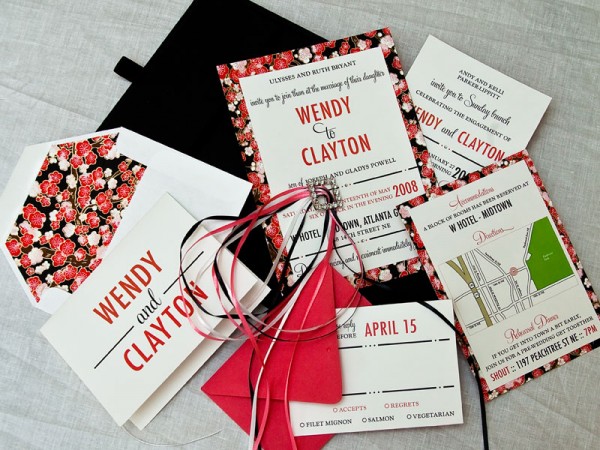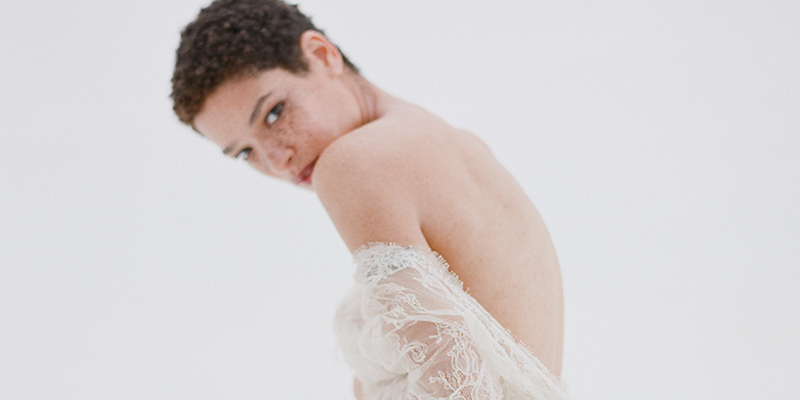Besides the paper product, a stationer provides service: advice and guidance on wording, items to be included, quantities to be ordered, turnaround times, and reliability of manufacturers. You can find a good stationer by word of mouth: Ask friends, vendors, and your wedding planner for recommendations. From the first save-the-date card mailed to the last thank-you note received, a wedding creates a lovely paper trail. Some tips on finding your guide:
First Things First:
If your invitation designer doesn’t know the difference between “stationery” and “stationary,” you need another vendor NOW.
Your Budget:
Before you begin your search, it’s key to figure out your price point. You don’t want to unnecessarily tempt yourself with stationery that turns out to be out of your budget. Additionally, you may find that you want to expand or limit your budget depending on how important stationery is to you and how many different pieces you want to order.
Prices — which generally includes the invitation, the reply card and envelopes for both — range from $5 to $70 per set. The type of printing process will greatly affect the cost. Custom designs with special details — such as handmade paper, calligraphy, painted embellishments or silk and crystal details — are the most expensive.
 Template or Custom:
Template or Custom:
There are two basic choices in wedding stationery: pre-designed invitations or custom invitations, which are created especially for your event. As a general rule, custom invitations tend to be more expensive than pre-designed ones. But different factors such as printing method and amount of pieces ordered can affect the price and make one a more cost-effective option than the other. Full disclosure; à deux only does custom work.
Timing is an important consideration when deciding between album templates and custom designs. Some designers need up to three months to complete custom orders. That means in order to postmark invitations 2 to 4 months before your wedding, you’ll need to start shopping at least six months in advance. Most non-custom, template-design orders will not require this much lead time; as little as a week’s production time may suffice.
How Many Pieces?
Do you want simple invitation sets or a full suite of stationery including save the date cards, programs, menus and escort cards? It’s important to consider what pieces you want: if you want invitations alone, you may be able to splurge on higher-end designs and create your own programs and place cards to your liking. Alternatively, if you are busy (who isn’t?) or DIY-challenged, you may wish to order an entire suite to ensure that all the pieces have a unified look.
 Printing:
Printing:
The primary printing methods are flat printing, engraving, thermography, letterpress and screen printing. Each has its own advantages and disadvantages. Flat printing has the most versatility and is also the most cost-effective. Engraving is a luxurious and traditional option, but it can be pricey. Letterpress is completely charming and lovely and wonderfully tactile. However, it has some printing limitations and it can be expensive. Thermography is a modern favorite and it gives the appearance of engraving without the OMG! price tag. Screen-printed invitations are slowly becoming pretty popular.
Location:
This may or may not be important depending on your needs. If you’re a computer savvy, email-friendly person, you may want to consider stationers outside your local area. Make sure the stationer is easily reached via email AND phone. If you want to “experience” the offerings ahead of time and you want the option of looking over an entire portfolio, you may want to consider choosing someone closer to home.
Style:
It’s important to find a stationer who shares and understands your personal style. This is particularly important when creating custom stationery. Look through portfolios to see how many designs really speak to you and if you feel confident that the stationer can bring your ideas to fruition.
References:
When you select a stationery vendor, you’re relying on their expertise. You trust them to know what they are doing, but how can you tell if they really are experts deserving of your trust? Before you sign a contract, be sure to Google the potential stationer for reviews and check references. Wedding stationery is an important and emotional investment — you want to be sure you’re working with someone honest, and reputable.
Most stationers will request a deposit of at least 50 percent at the time of the order. Read the contract carefully before signing, and ask questions to prevent costly surprises later on. With clear, open communication throughout, your stationery is sure to be an original reflection of you and your special day.
Next up: Wedding stationery etiquette and wording. FUN!
[divider]
[fancy_link link=”https://www.munaluchibridal.com/portfolio/kelli-parker/” variation=”teal”]Click here to view Kelli’s profile[/fancy_link]
[images: a deux bespoke bridal paper]







Well said and written Kelli! As a stationer myself, this topic has been in my queue for writing topics for quite a while. I couldn’t agree more–esp. with tip #1. :)